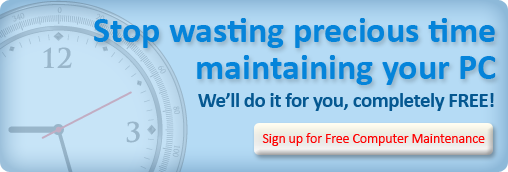![]() Remember when you first purchased your computer? You got it all set up, and on your first time using it you noticed a host of programs that came pre-installed on your computer, many of which you knew you would never use. On top of that, think of all the software that you installed, some of which have been forgotten and unused.
Remember when you first purchased your computer? You got it all set up, and on your first time using it you noticed a host of programs that came pre-installed on your computer, many of which you knew you would never use. On top of that, think of all the software that you installed, some of which have been forgotten and unused.
You are not alone. All of us have programs and software that we either don’t need or don’t use. Often, over time, this extra, unnecessary bulk can begin affecting the speed and performance of your PC, especially if you have limited free space on your hard drive. After the break, find out how you can take care of this computer problem and remove unnecessary Windows programs and software.
Before we walk you through the steps of deleting unneeded programs on your Windows computer, we would suggest you consult your local IT professional or computer advisor to make sure you do not accidentally delete anything important.
The simplest and most effective way to remove programs is to use the Add/Remove Programs feature in Windows (XP/Vista/7). You can access this tool by opening the Control Panel (Start > Programs > Control Panel).
This built-in Windows tool better ensures that all the extra files associated with the program(s) are removed as well. Some other uninstall methods will leave temporary data or saved data that would no longer be of any use to you without the program.
Here’s how to do it:
- Click the start button on the main program bar at the bottom of your desktop.
- Select “Control Panel”
- Select “Programs and Features” or “Add or Remove Program,” depending on which Windows operating system you have installed on your Windows computer.
- A list of programs should appear in a window, scroll through until your find the program you wish to delete, and then select the program.
- At the top of the page you should have options to “Uninstall”, “Change”, or “Repair” the program. Click “Uninstall” and follow the prompts.
- The rest of the process should be just walked through with the help of the program itself. Sometimes it may require you to restart your system for full effects to take place.
Keeping a healthy a well maintained Windows computer can be easy if you take the proper steps to keep things running smoothly by not over loading your hard drive. If you have any questions regarding what purpose programs serve, consult Microsoft’s help section of their website or check the FreeComputerMaintenance.com blog for updates.
